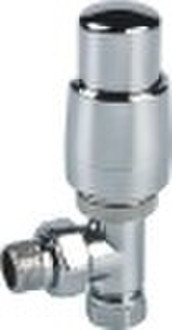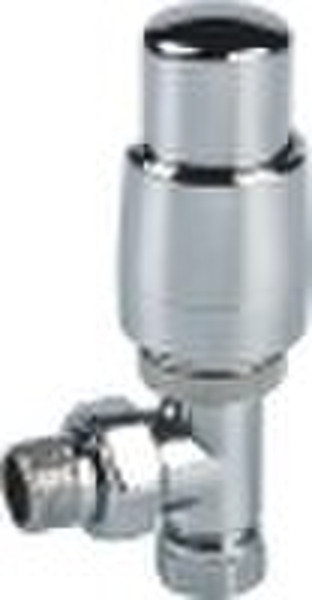Catalog
-
Catalog
- Agriculture
- Apparel
- Automobiles & Motorcycles
- Beauty & Personal Care
- Business Services
- Chemicals
- Construction & Real Estate
- Consumer Electronics
- Electrical Equipment & Supplies
- Electronic Components & Supplies
- Energy
- Environment
- Excess Inventory
- Fashion Accessories
- Food & Beverage
- Furniture
- Gifts & Crafts
- Hardware
- Health & Medical
- Home & Garden
- Home Appliances
- Lights & Lighting
- Luggage, Bags & Cases
- Machinery, Hardware & Tools
- Measurement & Analysis Instruments
- Mechanical Parts & Fabrication Services
- Minerals & Metallurgy
- Office & School Supplies
- Packaging & Printing
- Rubber & Plastics
- Security & Protection
- Service Equipment
- Shoes & Accessories
- Sports & Entertainment
- Telecommunications
- Textiles & Leather Products
- Timepieces, Jewelry, Eyewear
- Tools
- Toys & Hobbies
- Transportation
Filters
Search
2010 thermostatic radiator valve
original price: 5,49 USD
Foshan, China
Production capacity:
1000 Piece / Day

Lucy Tao
Contact person
Basic Information
| Place of Origin | Guangdong China (Mainland) |
|---|---|
| Brand Name | sunfar |
| Model Number | DN20 |
| Type | HVAC Systems |
Thermostatic control valveBrass valve body with high intensity of breaking and nickel-plated with rustproof performance.High resistance against pressure and abnormal chlimateTemperature control parts can be replaced by types of valve that produced by our company.Port size: DN20Temp range:8-28 Celsuis degreeReliable performance1, Tech Data1) Operating Pressure: 1Mpa2) Setting range:8-28 Celsius degree3) Flow temperature:120 max4)hydraulic intensity:1.6Mpa5)Valve body material: Nickel-plated brass6) For the pipe of : DN15, DN20,DN257) Life-span: 100,000min8) Suitable for EN2152/ We cam supply different size of TRVs including DN15(Normal diameter) DN20, DN25. straight valves, angle valves, three way cross valves are all in our production line. As a professional radiators manufacturer, we also provide high quality radiators, pipes, and gas boilers. We can also make valves as per your requirement or samples.3/ Features and Function1) Wax senor provides consistent and reliable performance.2) Provide individual room temperature control by various the flow of water through the radiator.3) The material of body: Non corrosive nickel-plated brass.4/ Installation precaution1) All radiators and pipe must be flushed thoroughly to prevent problems caused by weld beads, dirt or rust in the system.2)The radiator valve is installed in supply pipe to the radiator with the flow in the direction of the arrow3)We should install the thermostatic operatorsbefore all building and decorating working completed.4)The radiator valve should be installed so that the valve spindle is in a horizontal position to ensure good circulation of ambient air around the thermostatic operator.5) Circulation of air around the thermostatic head is not hindered.6)The thermostatic head with built-in sensor may not be mounted vertically., may not be covered by curtains either..5/ Optimum application to help you save energyInvesting in the correct heating controls not only has the advantage of saving energy, but also making the home a much more comfortable and user friendly place to live in. More people should become aware of the fact that turning down our thermostat just one degree will save us as much as 10% on the average heating bill.You should not turning a TRV to a higher setting will not make the room heat up any faster. How quickly the room heats up will be largely depend on a number of factors such as the boilers size and setting, and the radiator size. If you turn TRV to a lower setting, it will result in the room being controlled at a lower temp and you will save on energy.It is important to note that your TRV should not be covered by clothing or blocked by furniture. This is due to the fact that they need free flow of air to sense the temp in order to work properly.6/ Precaution for use1)TRVs sense the air temp around them and regulate the flow of water through the radiator wich they are fitted to. They don't control the boiler.2)These settings may have to be different in each room, and you’d better set the TRV to suit each room and then leave them to do their job.3)Turning a TRV to a higher will not make the room heat up any faster.4)TRVs need a free flow of air to sense the temp, so they need a free flow of air to sense the temp. They should not be covered by curtains or blocked by furniture. Nearby sources of heat such as lamps could also stop them from working properly.5)If fitting new TRVs,keep the plastic caps in a safe place. Unless your valves come with an OFF position. You will need those screw on to the valve, to force it into the OFF position, if removing the radiator(the thermostatic part is held on ith a screwed collar, and will need to be removed to fit the plastic shut-off cap on the valve). FROST position does not completely stop the water flow.7/ What's the thermostatic radiator valve?Thermostatic radiattor valves(TRVs) sense the air termperature around them, They work by regulating the flow of water through the radiator which they are fitted. TRVs provide much more focused control within a room, Therefore, pls set each TRV to a termperature best suited to each room. This is greatly beneficial in saving energy, as it offer the user the flexibility to have varioustemperature in separate room, rather than wasting energy heating a room that may not be occupied.They are provided with a regulating element which automatically controls the opening of the valve to keep ambienttemp of the room where they are installed constant at the set valves. The number on the valve corresponds to a specific air temperature. Once you have selected a number, the thermostatic valve will maintain this temp. This prevents unwantedtemperature risesand achieves considerable savings.8/ How does it work?Thermostatic radiator valve(TRVs) contain-as the name suggests-a valve that determine the hot water flow into your radiator. Usually a wax plug linked to the valve expands or contracts according to changes in room temperature and controls the valve via a connecting pin. We don’t suggest use radiator covers which will decrease the heating emission effect and waste energy.9/ History of Thermostatic radiator valves. Many years ago, the first ideas for heating controls saw the light of day, but it was not until 1943, the first radiator thermostat that the development of TRVs became serious. However, from the first invention to mass production to European market it took almost 15 years, and it was not until 1973 when the first oil crisis hit the world that the installation of TRVs really took speed.Today TRVs have a wide market distribution and acceptance worldwide as an energy efficient and competitive technology, In spite of this there is still a huge potential for future implementation of TRVs AS replacement of old manual valves to benefit the environment and reduce the energy costs for people around the world.
Delivery terms and packaging
Packaging Detail: poly bag+gift box+strong export paper cartonN.W:0.4kg/pcG.W:0.42kg/pc6pcs/inner box60pcs/ctn Delivery Detail: 10-15days after received deposit
Port: Beijiao(half hour to Guangzhou)
Payment term
Letter of credit
Telegraphic transfer
-
Payment Methods
We accept:









